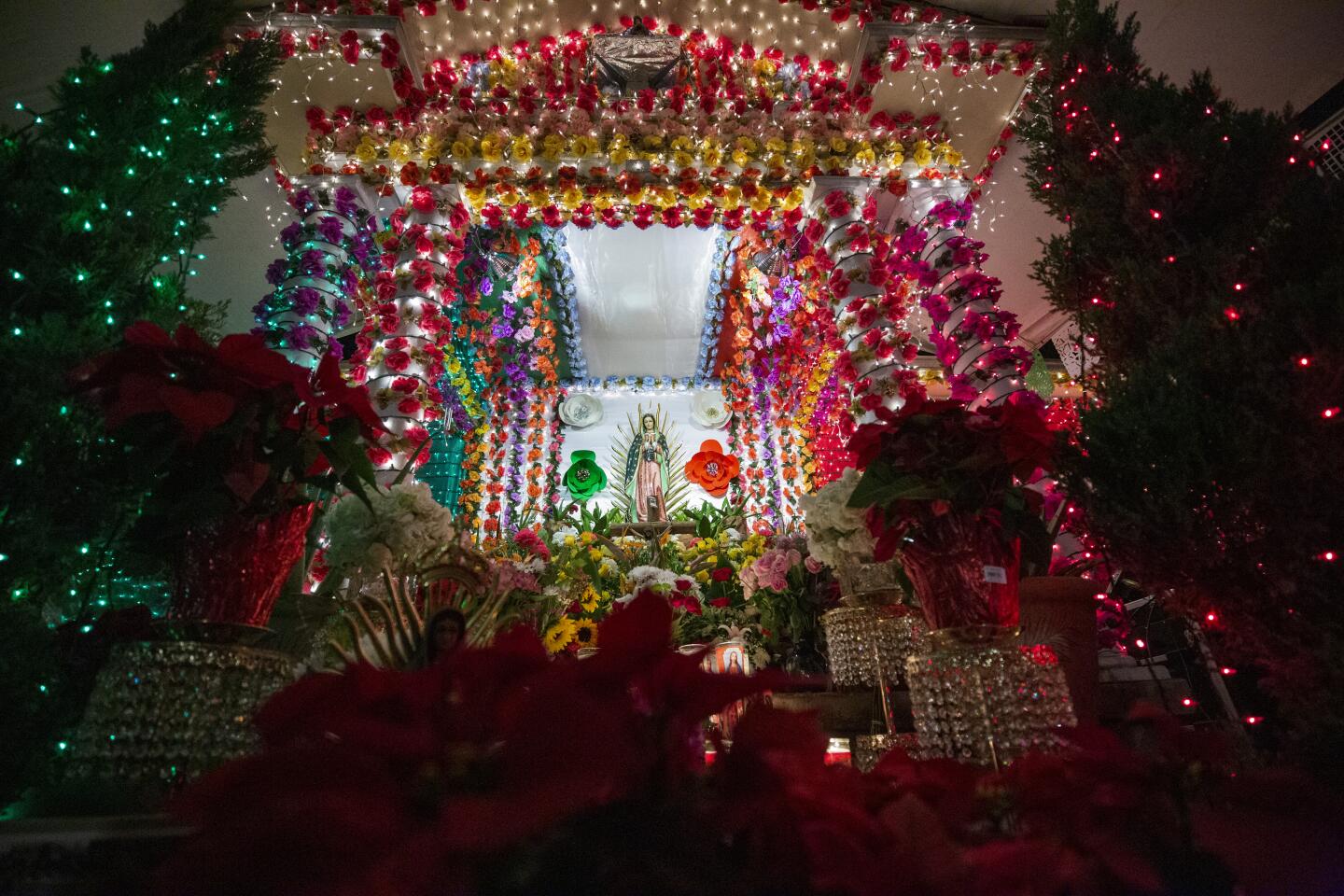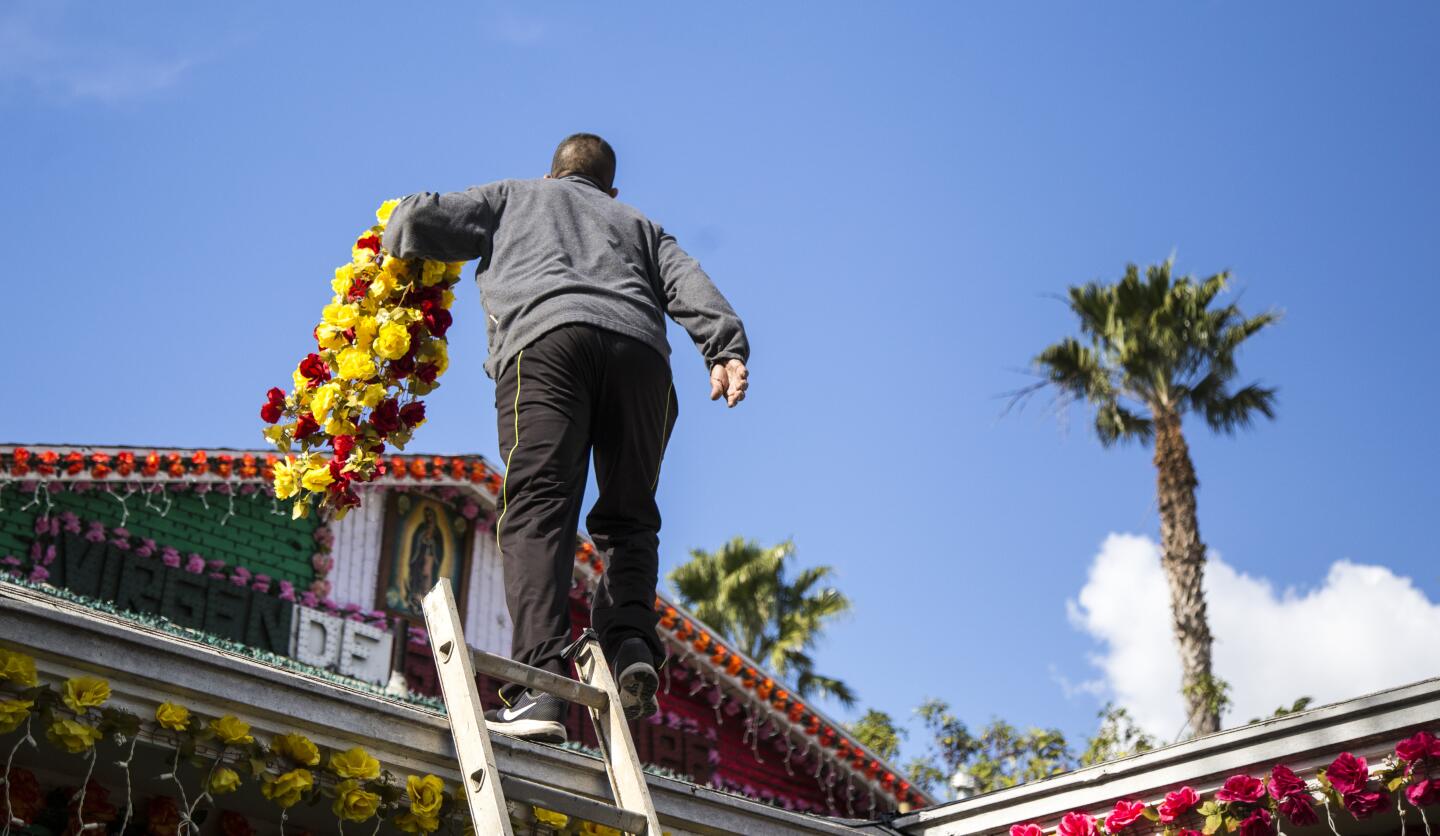
Luis Cantabrana, 52, remembers his first Día de La Virgen de Guadalupe outside of Mexico.
“When I first arrived in the United States, they invited me to her celebration at a local church, but they only had two flower arrangements for her,” he said. “She looked so sad. That’s why I promised her right there that wherever I lived, I would build her a shrine for all the people to come and celebrate her as she deserves.”
For the past 25 years, Cantabrana has kept his promise, his devotion for la Guadalupana leading him to fashion a pop-up shrine on the front porch of his Santa Ana home. (Gustavo Martínez Contreras)
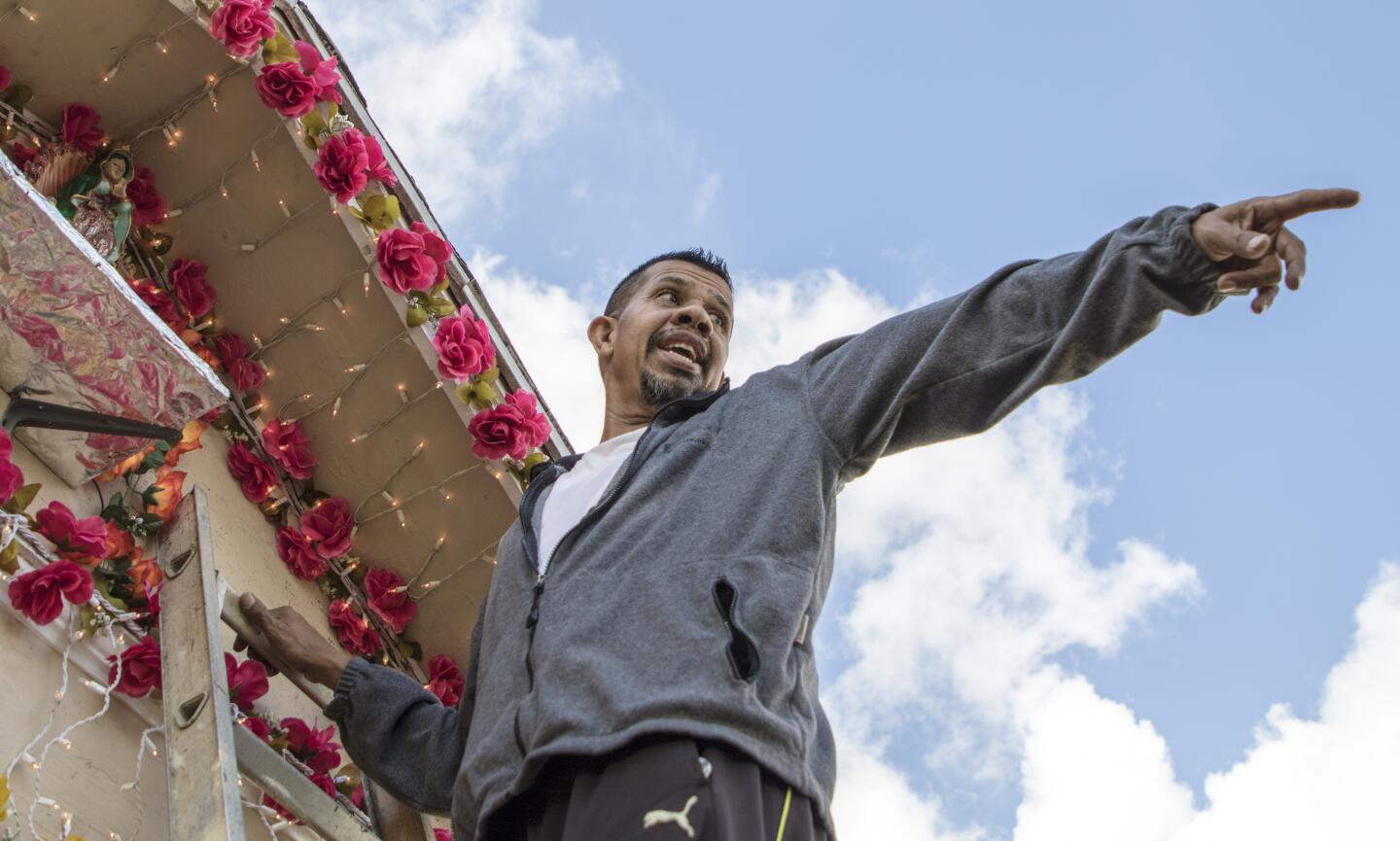
Every year in late November, Luis Cantabrana pulls out storage boxes containing flowers, lights and tinsel that soon wrap the front porch of his home for el Día de La Virgen de Guadalupe. Family, friends and community members help, and the whole ordeal takes him about two and a half weeks.
The altar must be ready in time to start the novena, the nine days of praying, on Dec. 3. (Gustavo Martínez Contreras)
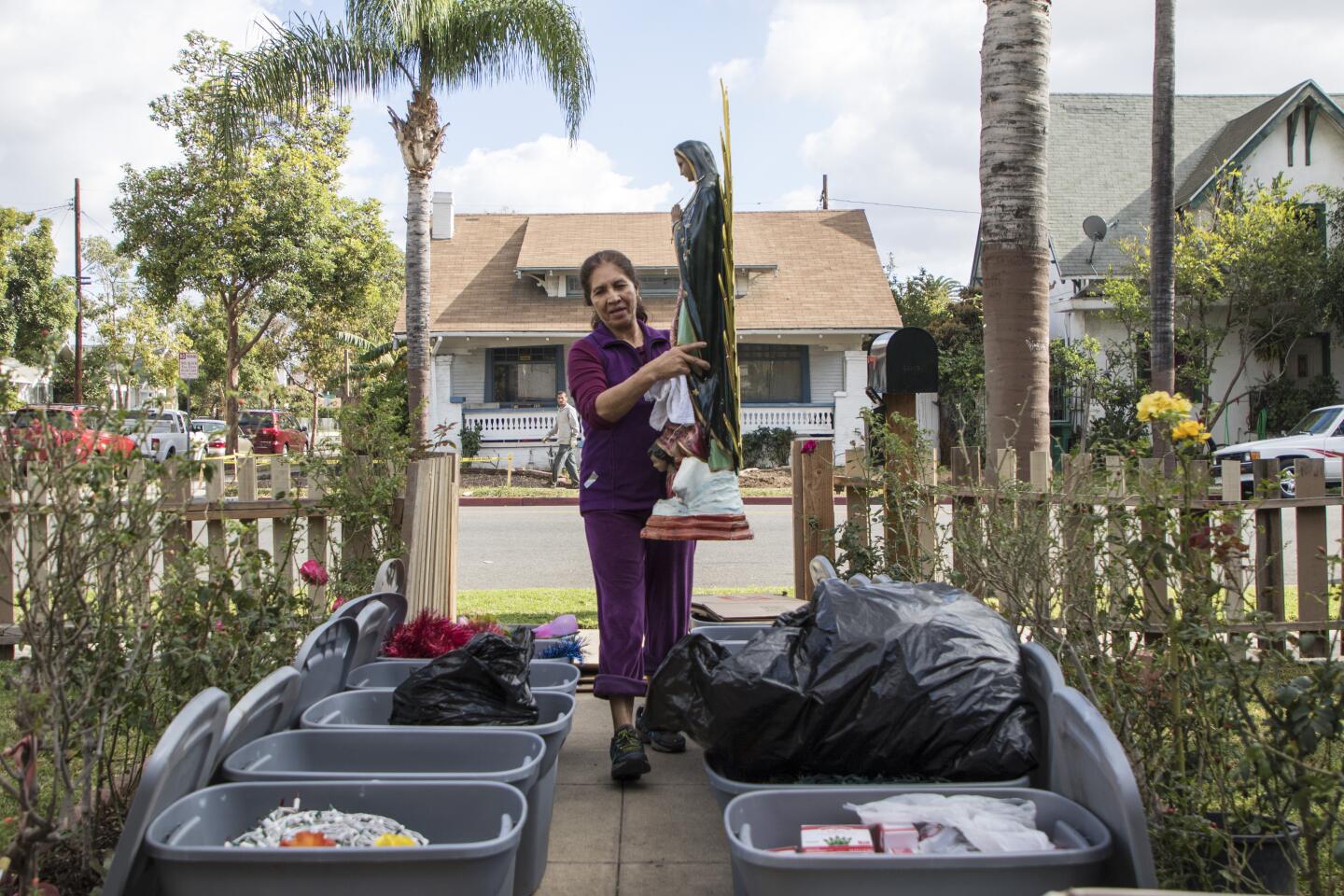
Each year, Luis Cantabrana’s home in Santa Ana gathers hundreds of people from the neighborhood to celebrate el Día de La Virgen de Guadalupe.
For the last couple of years, his sister Sofía, who lives in Mexico, has been able to join him in the preparations.
“This is a great blessing because now I can also share with my family this labor of love for our Mother la Virgen de Guadalupe,” Luis said. (Gustavo Martínez Contreras)
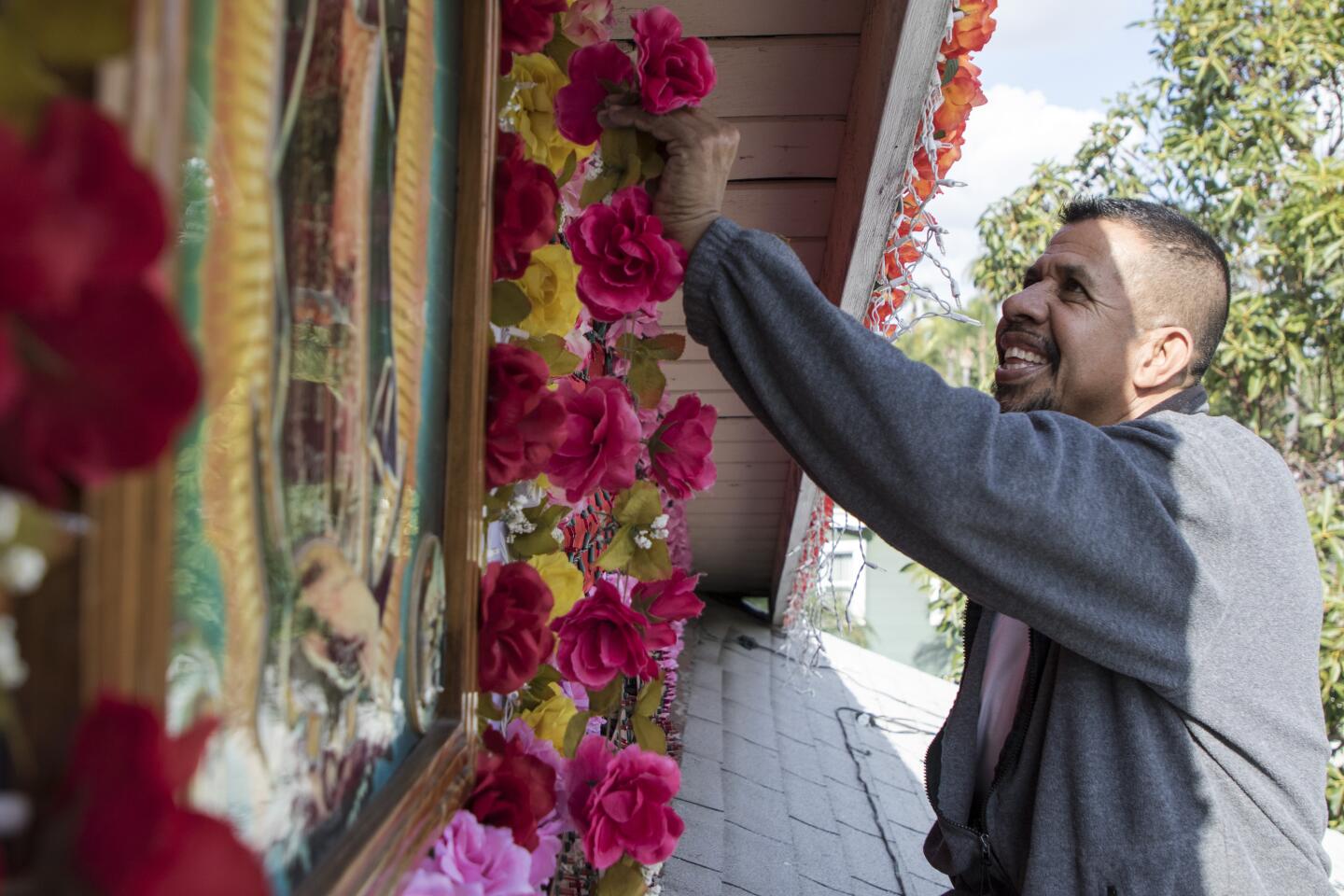
Luis Cantabrana has not been back to his native town of Sayulilla, in the Nayarit state of Mexico, for over two decades, so for him, building this yearly shrine is a way to connect with the traditions he grew up with. It’s also an opportunity to show people from other cultures the love and respect Mexicans feel for la Virgen Morena.
“She’s faith, hope and pride of being born Mexican,” he said. “She’s the mother of all Mexicans and the one who intercedes for us with the Big Guy who lives in the skies.” (Gustavo Martínez Contreras)
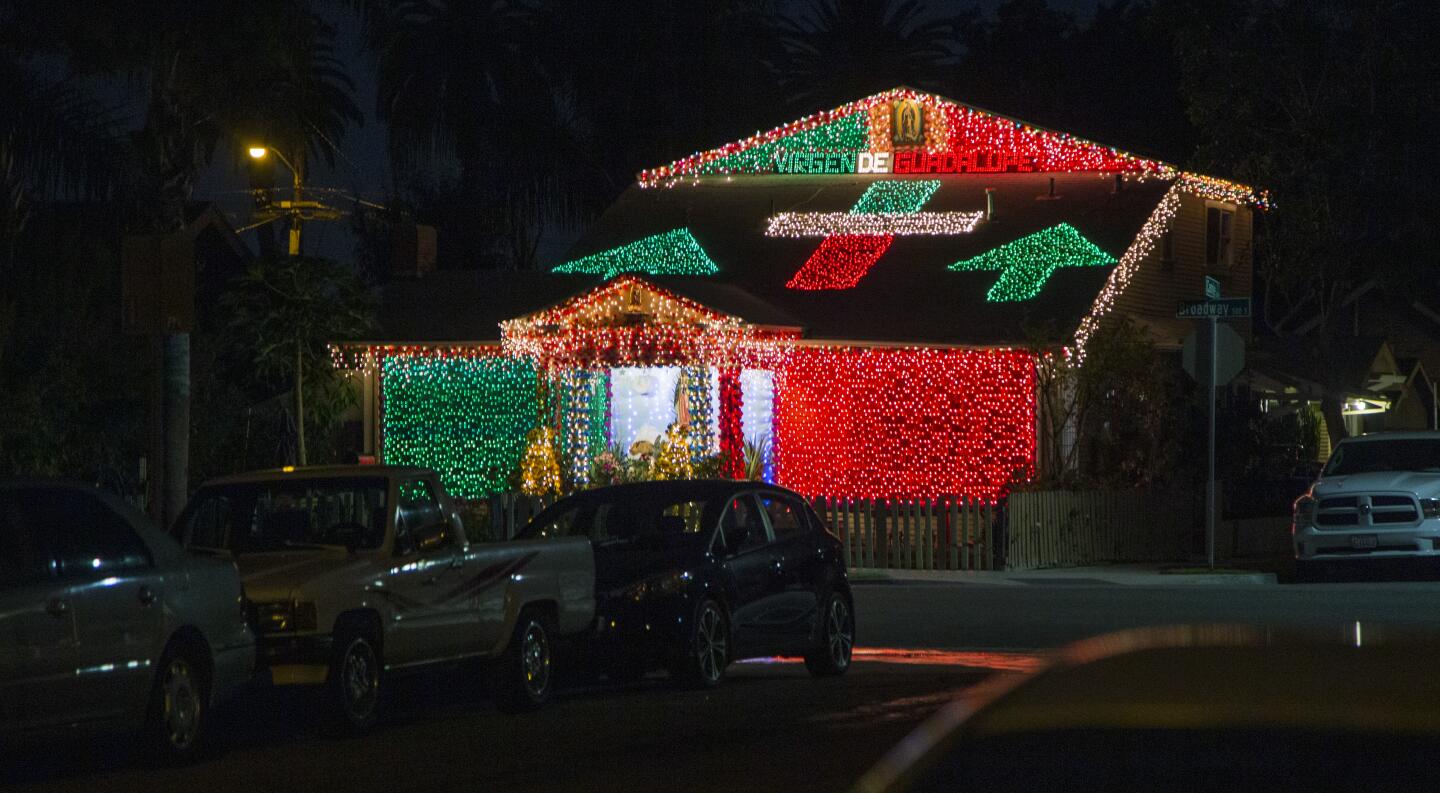
The home is hard to miss when passing by the intersection of South Broadway and West Camile Street in Santa Ana
Once the shrine is ready, thousands of green, white and red lights cover the façade of Luis Cantabrana’s house, turning it into a giant Mexican flag. The porch becomes an altar, with a four-foot tall figure of la Guadalupana standing atop a fake hill made with tables wrapped in brown paper.
Fabric flowers, more lights and tinsel wrap around the columns and yet another shrine rises to the tip of the sloped roof above the porch. An image of La Virgen overlooks the yard and street below. Underneath it, an iron sign strewn with more green, red and white lights reads in uppercase: VIRGEN DE GUADALUPE.
(Gustavo Martínez Contreras)
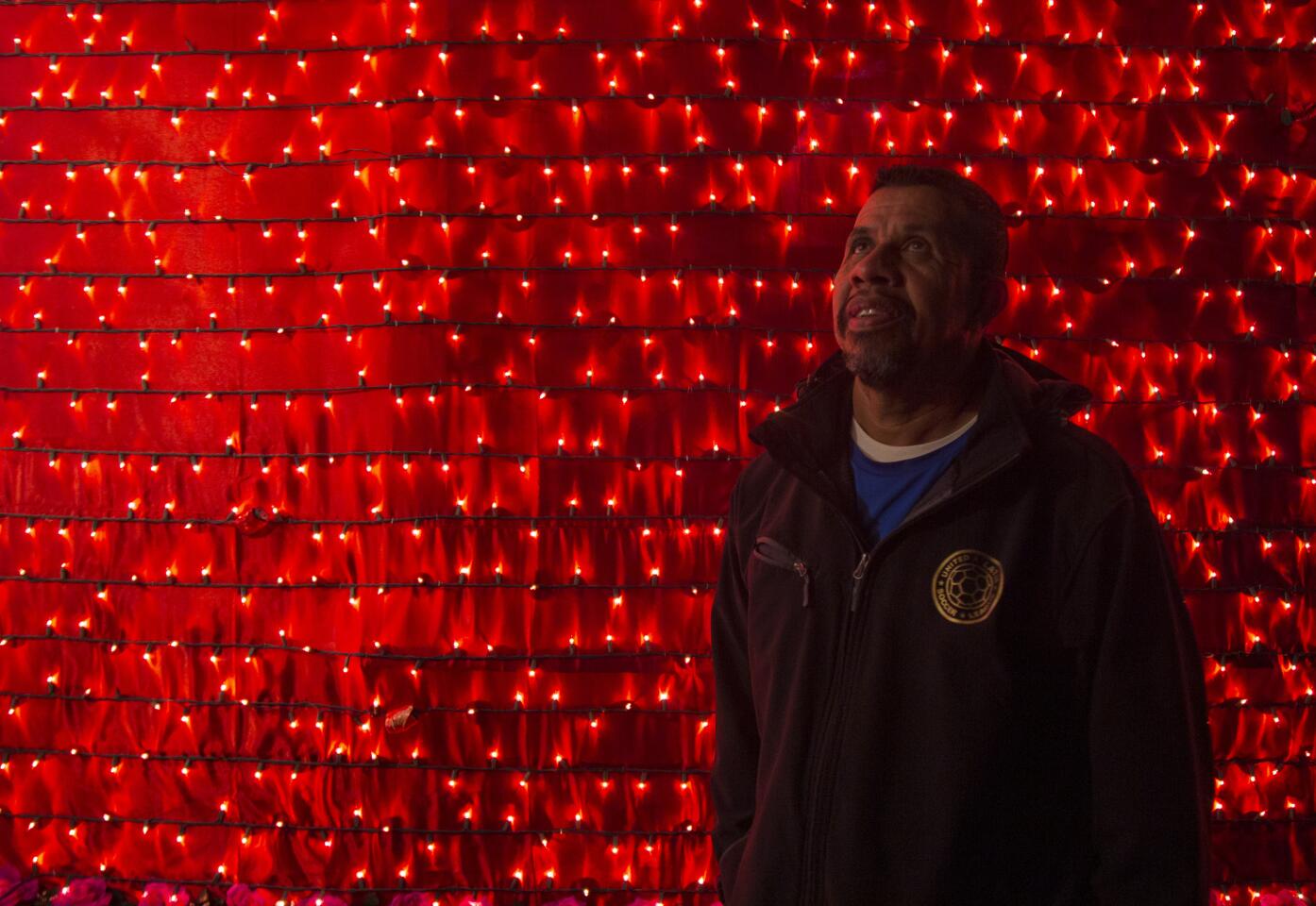
The religious accounts claim that in 1531 Virgin Mary appeared four times to Juan Diego, an indigenous Mexican who had converted to Catholicism after the Spanish conquered the Aztec empire 10 years earlier. Speaking to him in his native tongue, Nahuatl, she asked him to go to the top Catholic authorities in Mexico to ask for a temple to be built for her on the hill where Juan Diego envisioned her, el Tepeyac.
That was the same site where the Mexica worshiped the mother goddess Tonantzin. The accounts also claim that Fray Juan de Zumárraga, the archbishop of Mexico City, dismissed Juan Diego who kept insisting and finally brought proof of his visions. The Virgin instructed Juan Diego to take Castilian roses to Zumárraga in his cloak. When he delivered them, the image of Our Lady of Guadalupe was on the fabric of his cloak. Since then, la Guadalupana has become a symbol of being Mexican. When father Miguel Hidalgo launched the war for Mexican independence from Spain, he carried an image of Our Lady of Guadalupe. Years later, when the United States invaded Mexico in 1847, the last fighters in Mexico City carried banners with her image as they defended the capital from the U.S. army that eventually took the city. During the revolution of 1910, rebel leader Emiliano Zapata carried a banner with her image to rally his army. The Zapatista uprising of 1994 would follow that example and take la Virgen Morena as one of their symbols. That’s why it is hard to think of a Mexico without la Virgen de Guadalupe. (Gustavo Martínez Contreras)
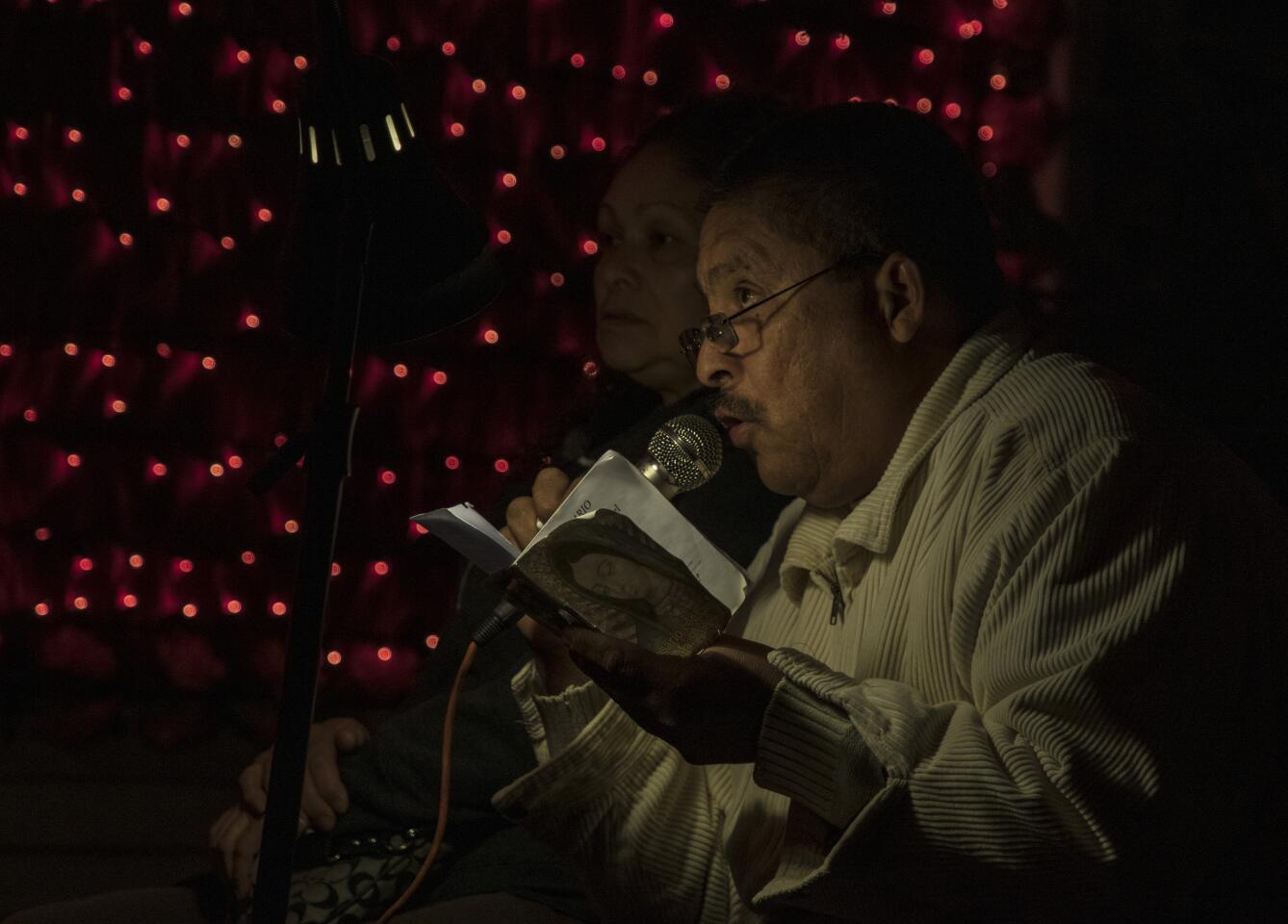
For nine straight nights, prayer is held at around 8 p.m., when people start gathering at Luis Cantabrana’s house in Santa Ana to celebrate La Virgen de Guadalupe, thank her for her protection and ask for her favor in the upcoming year. All the people helping during these days are volunteers from within the community. (Gustavo Martínez Contreras)
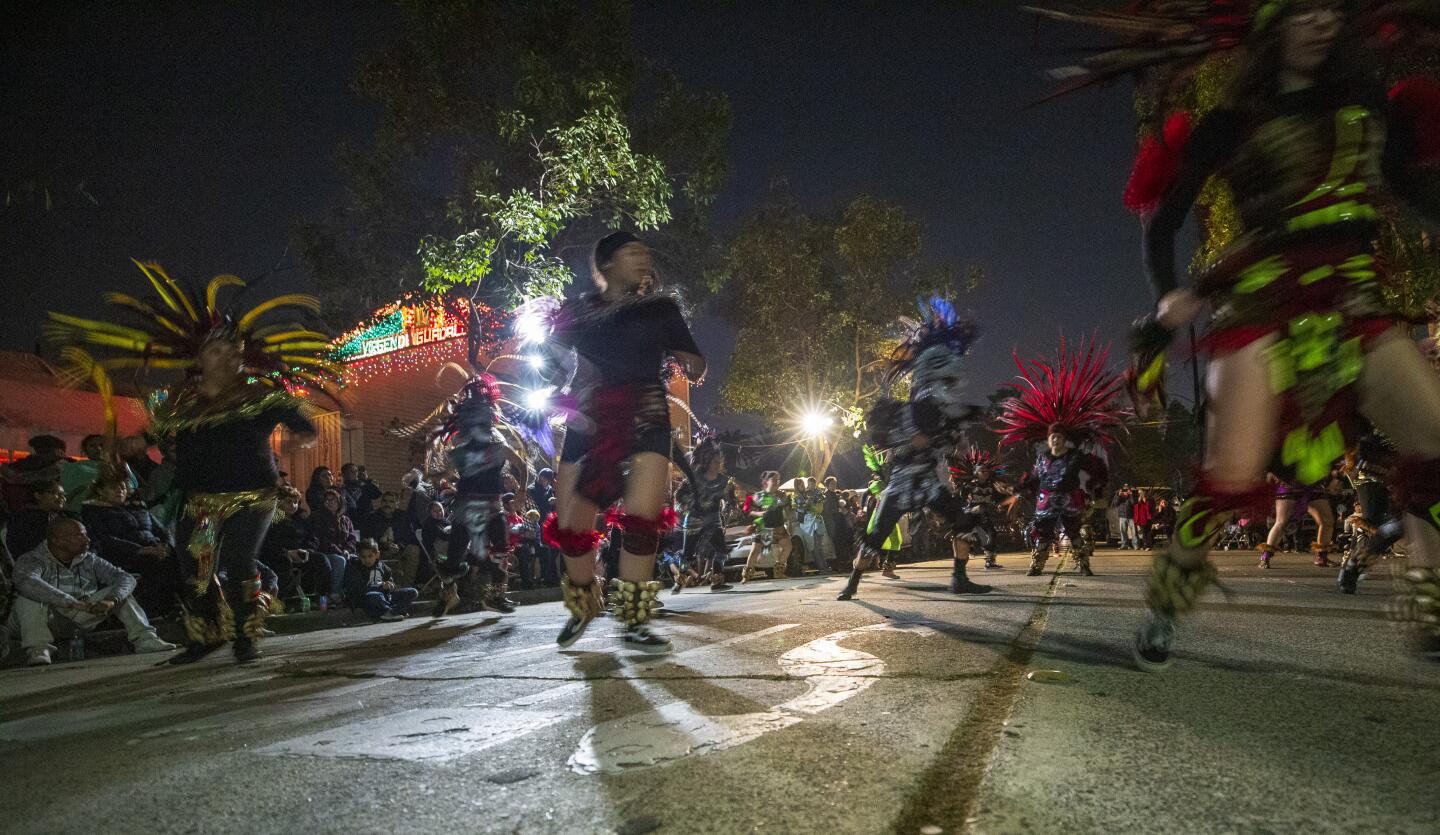
Last Dec. 11, groups of traditional dancers performed and offered their respects to la Virgen de Guadalupe. Each year, many avoid the big crowds in different churches across Southern California, and instead make their way to Luis Cantabrana’s home in Santa Ana to enjoy the performances that go on until late.
Cantabrana said that these groups call in advance and he creates a schedule for everyone to be able to perform. “They tell me that it is very important for them to come here and dance for la Virgen at our community shrine.” (Gustavo Martínez Contreras)
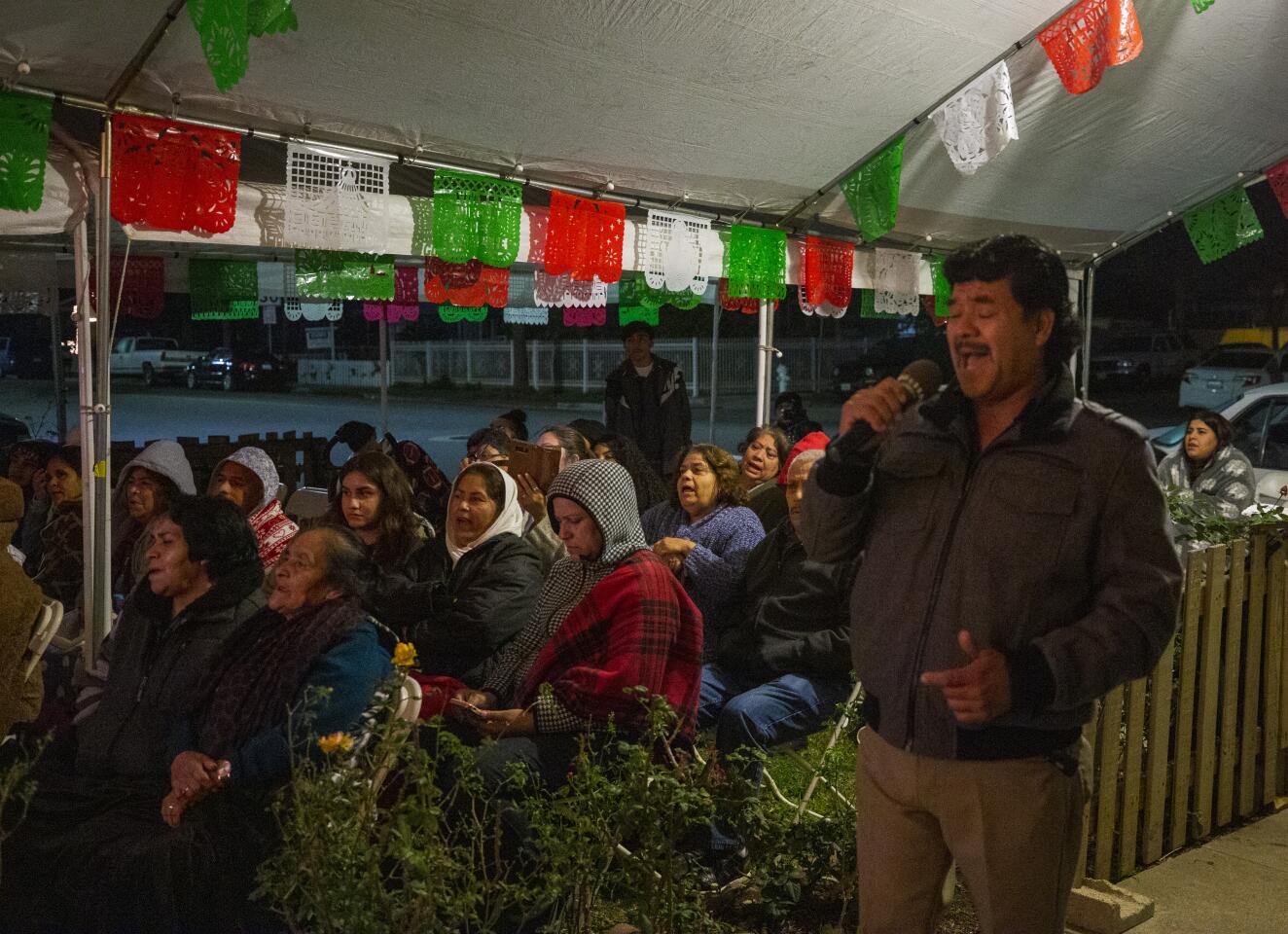
At midnight last Dec. 12, and after all the performances were over, people gathered inside the shrine to sing “Las Mañanitas,” the traditional “Happy Birthday” song in Mexico, to celebrate yet another year of the ancestral mother. (Gustavo Martínez Contreras)
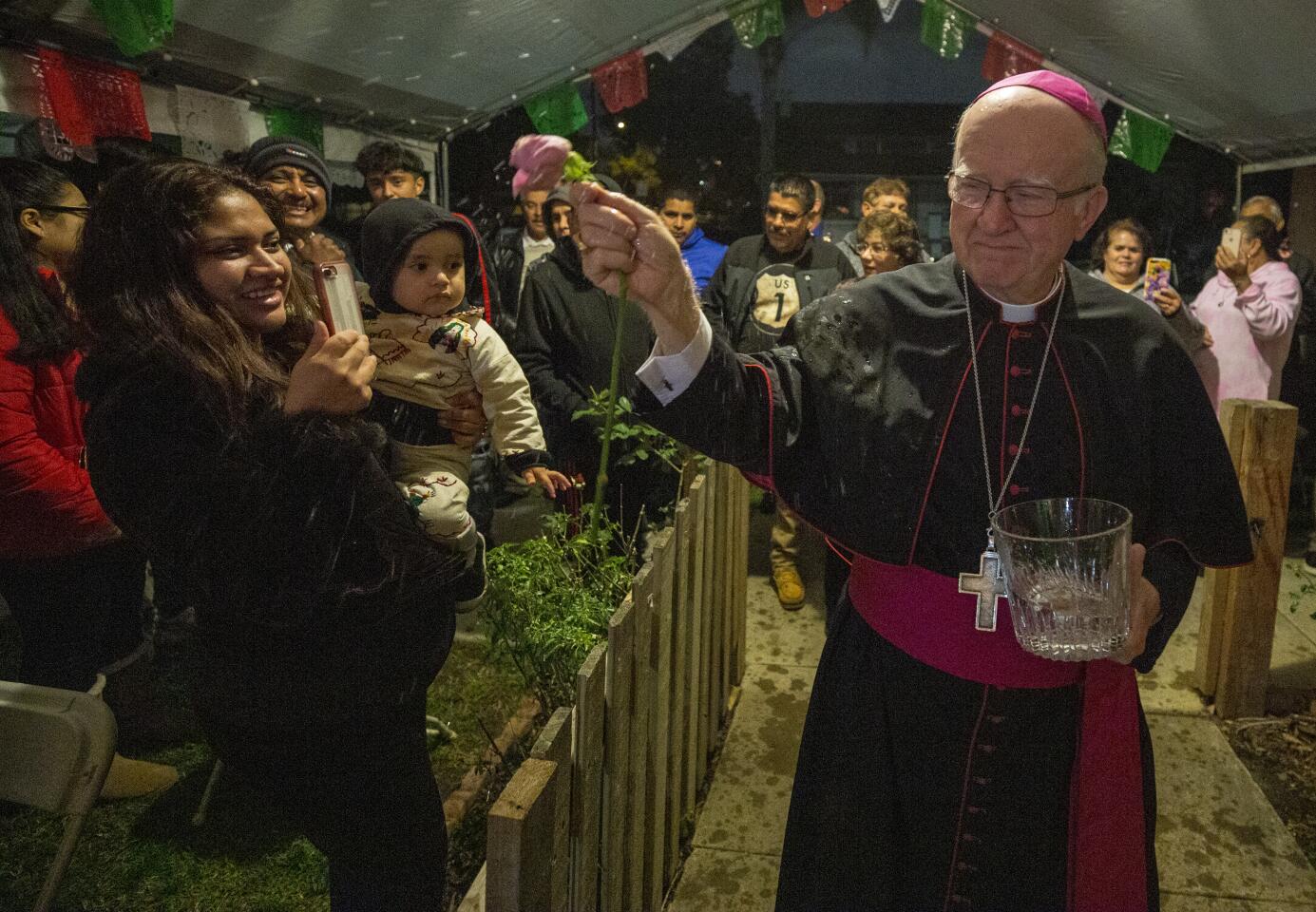
This shrine at Luis Cantabrana’s home has become such an important symbol in Santa Ana, that Orange County Bishop Kevin Vann has made it a point to visit it each year during the celebration. While there, he speaks to the people, blesses them with holy water and poses for photos.
“The brilliance and beauty of the lights on his home, which shine truly in the darkness of night, are an example to me of the light of Faith which we daily need in our lives,” Bishop Vann said during his visit last year. (Gustavo Martínez Contreras)
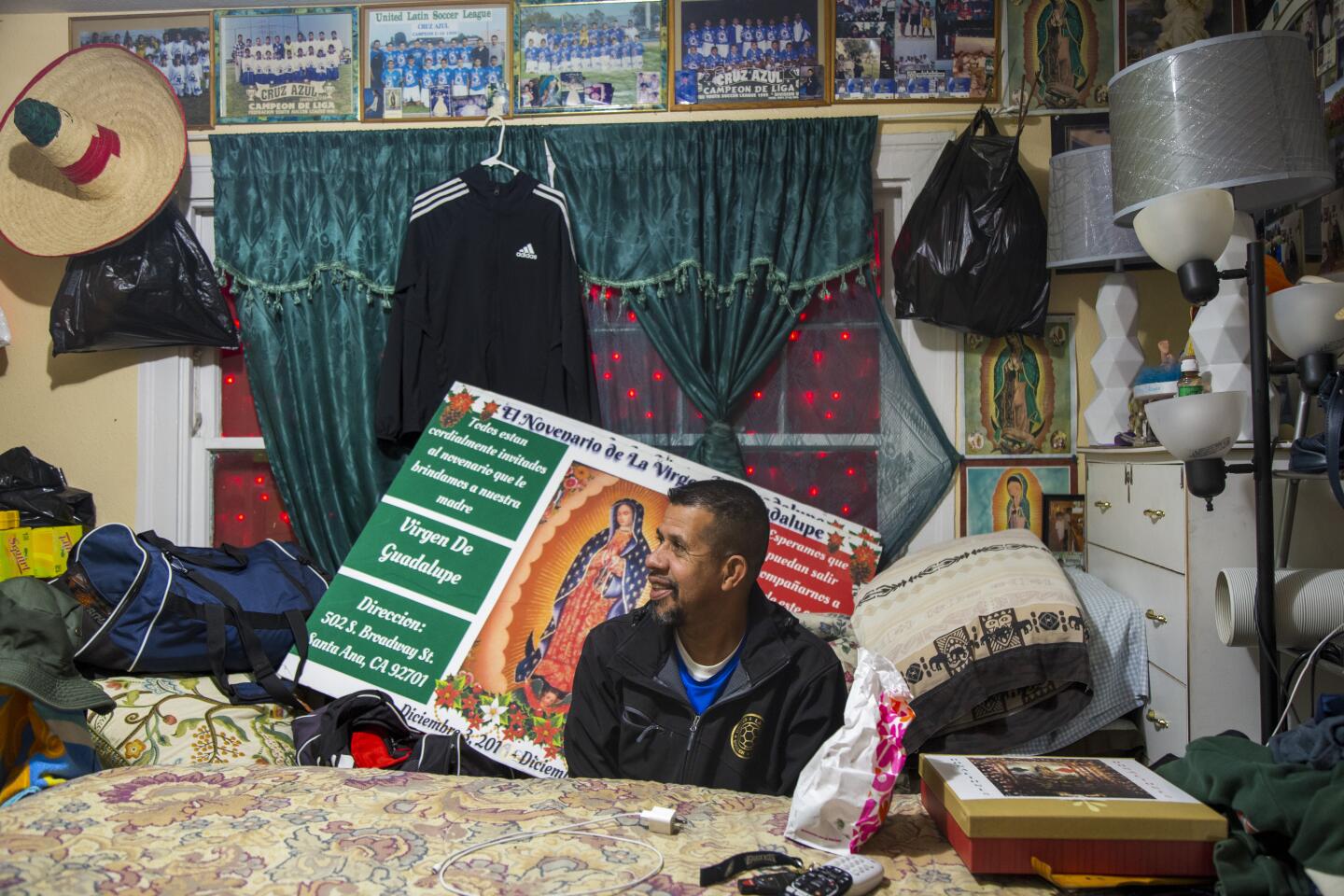
Luis Cantabrana keeps the shrine until early January, when he puts everything away and starts thinking of next year’s decorations. In the meantime, he goes back to his work in landscaping and his passion of coaching soccer to local youth.
“I feel it’s my duty to help the children to stay out of trouble,” he said. “When I first started doing this here, there was crime, and it was not a nice place to walk at night. But now, young people come knocking on my door asking me when I’m going to start putting up the shrine because they want to help.” (Gustavo Martínez Contreras)
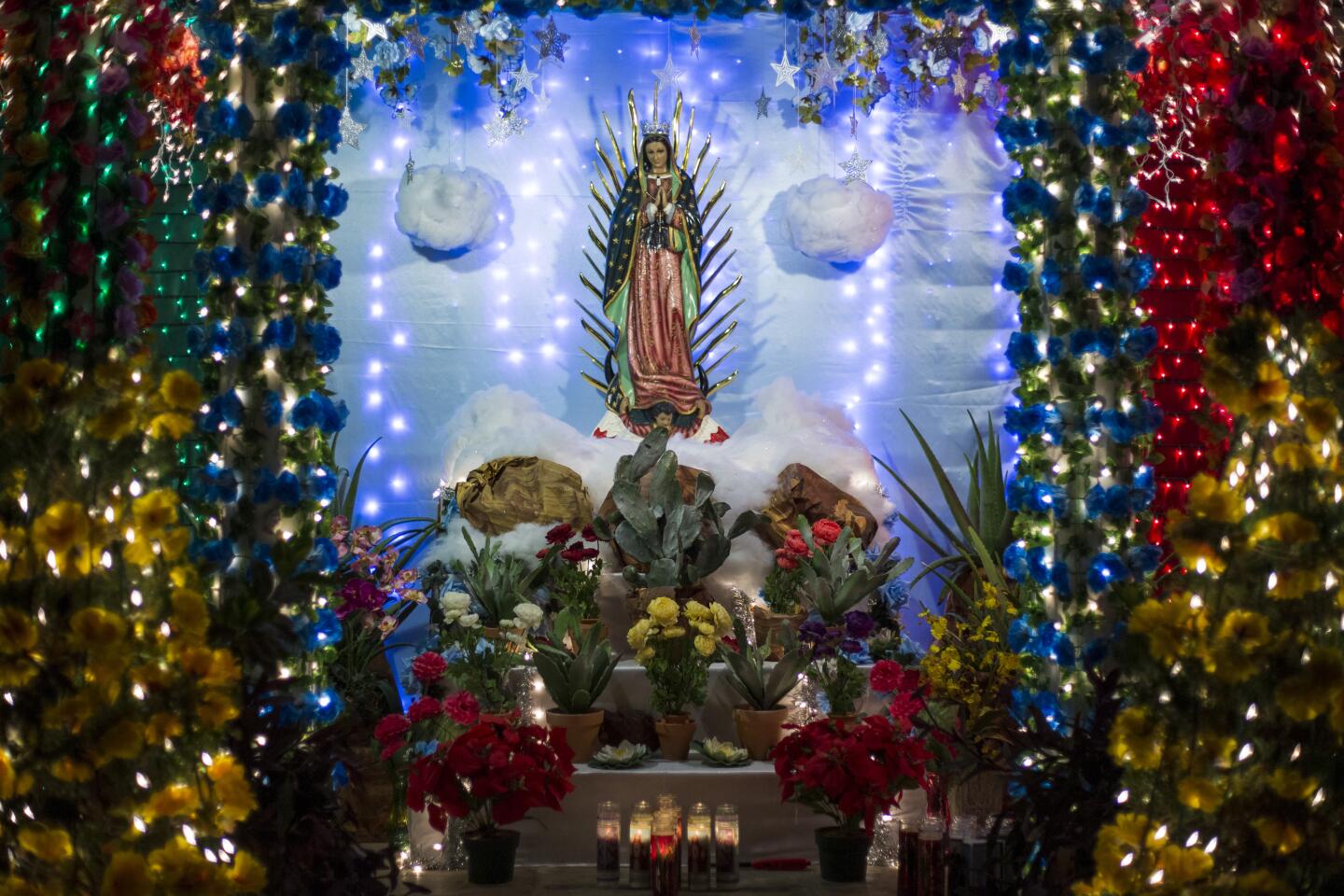
This year’s decoration features the image of la Virgen de Guadalupe emerging from the clouds and rising into the heavens where she shines along with the stars. Luis Cantabrana tries to change the design every year. (Gustavo Martínez Contreras)
